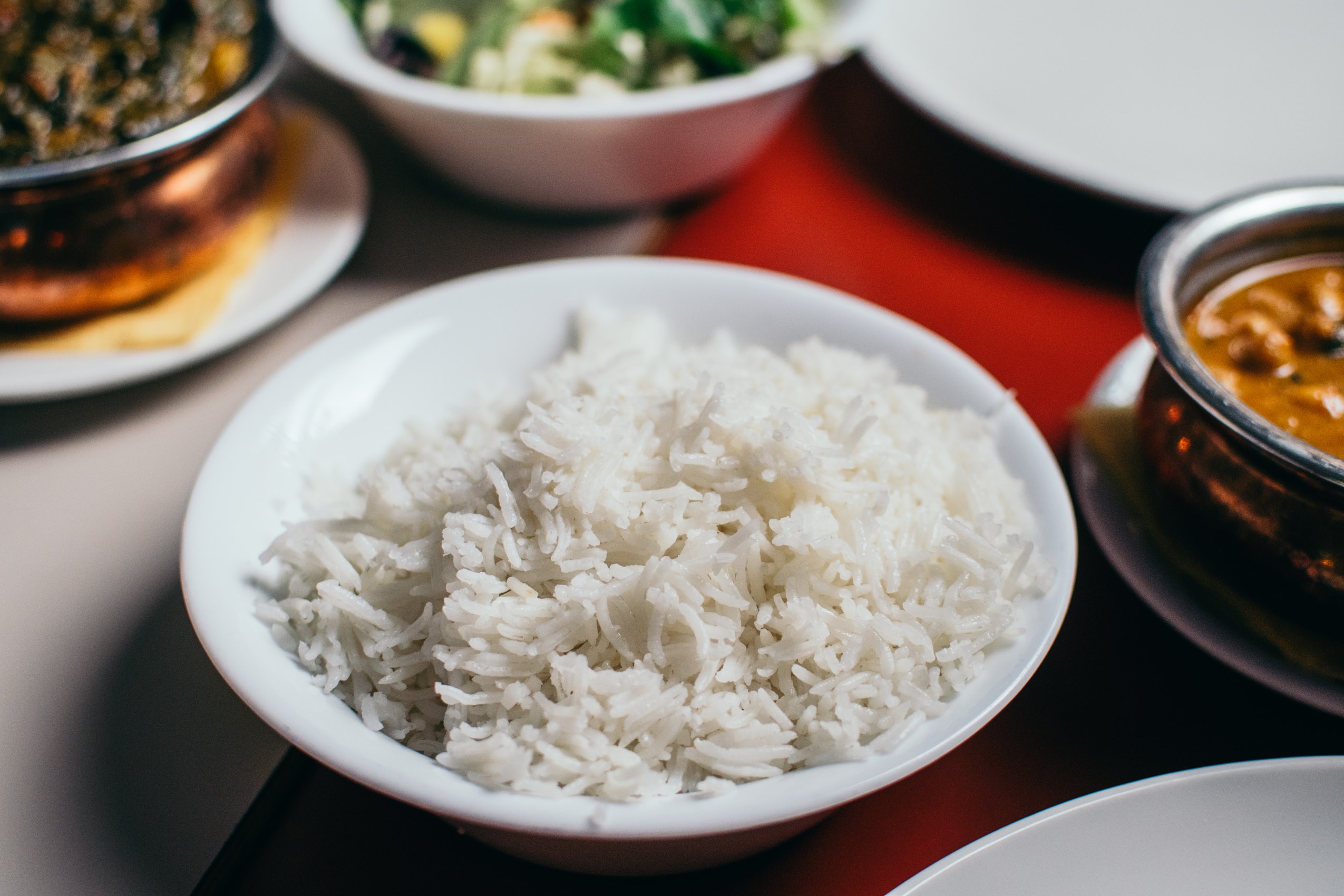I have a family member who is underweight, eats a mostly plant-based diet, and loves white rice. Me? Not so much. White rice starts out as brown rice but is milled in such a way that most of the health promoting stuff is removed in order to extend its shelf life (some of the nutrients are added back in a synthetic form but up to 85% of these nutrients can be lost if the rice is rinsed prior to cooking). White rice, like white flour, high-fructose corn syrup, honey and maple syrup, is considered to be a “bad carb”. According to Dr. Dean Ornish, “In a good carb, the fiber and bran fill you up before you get too many calories. For example, you can only eat so many apples, you’ll get full before you eat too much. Also, fiber and bran slow the rate at which you absorb nutrients (including sugar) from your gut into your bloodstream. In contrast, you can consume large amounts of sugar, white rice, and white flour without getting full because you’ve removed the fiber and bran. Also, the food gets absorbed very quickly, it’s like injecting sugar into your veins, causing your blood sugar to spike. This, in turn, causes your pancreas to make more insulin, and insulin creates chronic inflammation, one of the underlying mechanisms of most chronic diseases.”
So, white rice, white flour, and sugar can be good on some level for people who are trying to put on weight, but white rice consumers are deprived of the fiber, bran, and nutritional benefits of other types of rice and grains, and as a result, increase their disease risk.
If white rice, and white flour can lead to obesity, why is it then that billions of people throughout Asia, who eat the most white rice on the planet, haven’t had an obesity problem until recently? According to the National Health Commission Report, more than half of adults in China are now overweight (over half a billion people), which is a dramatic jump from 2002, when it was estimated that only 29% of Chinese adults were overweight. So, what gives? In many parts of China, brown rice is still regarded as a poor person’s food, which is akin to how many in the US continue to view animal products as symbols of wealth and success. It turns out that the dietary patterns of people living in China have changed dramatically too, as they have become more westernized and achieved greater economic success. In other words, and unfortunately, people in China are eating more like Americans (SAD), which means a lot more animal protein, and to a lesser extent, added oils too. According to one study, between the years of 1989 and 2011, pork consumption levels for Chinese adults increased by nearly 50%, while daily vegetable oil intake increased by over 20% too. At the same time, cereal consumption decreased by close to 30% (which is a triple whammy!). And why is animal protein, once again the culprit? It turns out that when a person eats white rice or white flour, and then adds meat to their dish, their blood sugar levels double, and their pancreas has to work twice as hard to pump out more insulin. And as Dr. Ornish has explained, more insulin means more chronic inflammation, and ultimately, more chronic diseases. Wow.
The good news is that a healthy plant-based diet can not only help, but often prevent and reverse chronic diseases entirely. This may explain why people on plant-based diets are less likely to develop chronic illnesses like cancer and diabetes. According to the PubMed article below, “there is evidence that a vegan diet is associated with relatively low daily insulin secretion, probably because animal protein can markedly potentiate the insulin secretion triggered by carbohydrate ingestion.”
The bottom line? Making a switch from white rice to brown rice has been shown to positively impact your health. This includes lowering the risk of diabetes, decreasing cardiovascular risk by improving cholesterol levels, lowering blood pressure and antioxidant activity, while providing protection against inflammation and cancer (Ornish.com).
So, there we have it, white rice. And another example of animal protein rearing its ugly head in more harmful ways than we can imagine.
Sources:
White Rice, Part One (5min video)
Brown Rice, Part Two (5min video)
Ornish.com
Other sources:




